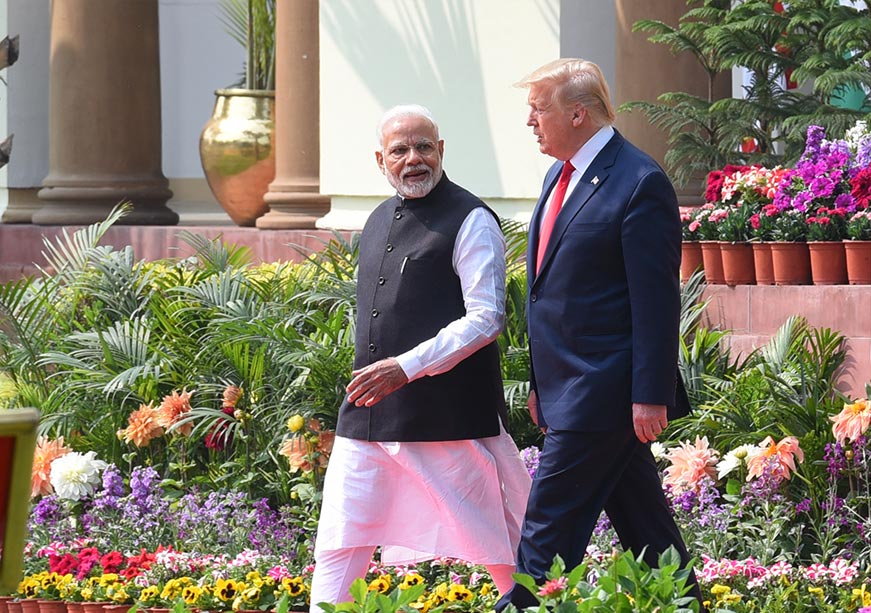-
CENTRES
Progammes & Centres
Location
Latin America rises on India’s trade radar, offering a buffer against global volatility, access to vital resources, and deeper energy, mineral, and export linkages

Image Source: Getty
As the much-deliberated/anticipated ‘trade weaponisation’ era commences, India is rightly positioned to diversify its economic partners. This presents a new window of opportunity to reassess regions that previously received less attention, such as Latin America. Neglected by New Delhi for much of the 20th century, the past two decades have revitalised the political relationship between India and Latin America, in line with the gradual expansion of trade and investment ties in the 21st century. This is more evident in certain sectors, for example, automobiles. Latin America is one of India’s most important car, motorcycle, and auto parts export markets. Nearly half of India’s motorcycle exports in 2024, and one-fourth of the country’s car exports, were destined for the Latin American region 2024. In fact, over the past four years, India has exported more cars to Chile than to the United States (US), with Peru next in line.
The Chilean President, Gabriel Boric, made a landmark visit to India in April, with a 50-member delegation visiting Delhi, Mumbai, and Bengaluru.
Both Chile and Peru have caught New Delhi’s attention over the past two months. The Chilean President, Gabriel Boric, made a landmark visit to India in April, with a 50-member delegation visiting Delhi, Mumbai, and Bengaluru. During this visit, six ministers, the Chief Executive Officers (CEOs) of the largest Chilean companies, a parliamentary delegation, representatives from chambers of commerce, the film industry, the healthcare sector, startups, and universities, accompanied President Boric. While both countries signed a slew of agreements, the most notable is the decision taken by Chile’s Codelco, the world's largest copper producer, to sell copper concentrates to Kutch Copper, part of the Adani Group and the largest single-location copper smelter plant in the world. The visit culminated with a promising announcement: India and Chile will soon sign a Comprehensive Economic Partnership Agreement (CEPA), an all-encompassing deal, akin to the deals India has signed with the United Arab Emirates (UAE), Japan, and South Korea.
Peru was in the spotlight, as well. After a gap of 38 years, Peru’s foreign minister, Elmer Schialer Salcedo, made a bilateral visit to India in March 2025, accompanied by the Foreign Trade and Tourism Minister and a large business delegation. India and Peru are expected to sign a Free Trade Agreement (FTA) this year, after the multiple negotiation rounds that began in 2017. In the case of India-Peru ties, politics now follows economics. It may come as a surprise that India’s trade with Peru—a country 15,000 kilometres (KM) away— is greater than our trade with neighbouring Sri Lanka, with which India has enjoyed an FTA since 2000. For a brief period in November 2024, Peru was also the cynosure of all eyes as the US and Chinese presidents, amongst others, made it to Lima for the Asia-Pacific Economic Cooperation (APEC) Summit. The Chinese President Xi Jinping also inaugurated the Chinese-built Chancay megaport, which connects Peru to China and the larger Asian continent. Although China championed the Chancay, it will benefit a large section of the Asia-Latin America trade.. One such example is the first blueberries shipment by the Peruvian agricultural giant Camposol, which exported the fruits from Chancay to India in February 2025. Much like Chile, Peru has an abundance of critical minerals essential for the energy transition, and Indian companies have started to take notice. Indian technological and pharmaceutical companies have expanded their presence in Peru, with companies like Tata Consultancy Services (TCS) employing 2,000 people each in Peru and Chile.
The Latin American region accounts for roughly 15 percent to 20 percent of India’s petroleum imports, and supplies copious amounts of vegetable oils and agricultural products to India.
While Peru and Chile are the latest from the Latin American region to capture New Delhi’s attention, these are only small examples in a much larger canvas. The larger picture is this: Latin America can and should serve as an economic hedge for India. In this context, there are two trends that we should follow. The first is based on India’s immediate interests, where Latin America is an important element in Delhi’s energy and food security calculus. A newer element has been added to this list—critical minerals. The Latin American region accounts for roughly 15 percent to 20 percent of India’s petroleum imports, and supplies copious amounts of vegetable oils and agricultural products to India. The region has abundant reserves of critical minerals like copper, lithium, nickel, cobalt, and rare earths. Indian companies have so far only managed to secure large supplies of copper from Latin America. The second trend is to enter the region’s value chains, to shield Indian companies from uncertainties emanating from other countries or regions. Indian companies in the automobile, pharmaceuticals, agribusiness, and Information Technology (IT) sectors are already part of regional value chains in Latin America. This should be expanded to prepare for the US imposition of tariffs, considering Latin American countries face far lower US tariffs than any other region. India’s pharmaceutical and automobile companies (including auto parts) already have manufacturing units in the Latin American region. They can now export from these units to the US and face lower tariffs than Indian exports. They could also benefit from FTAs that the US has signed with 11 countries in the Latin American region. For the past three decades, trade has underpinned the India-Latin America relationship. It is now time for politics and economic diplomacy to take the lead.
Hari Seshasayee is a Visiting Fellow at the Observer Research Foundation and Co-founder of the Consilium Group.
The views expressed above belong to the author(s). ORF research and analyses now available on Telegram! Click here to access our curated content — blogs, longforms and interviews.

Hari Seshasayee is a visiting fellow at ORF, part of the Strategic Studies Programme, and is a co-founder of Consilium Group. He previously served as ...
Read More +